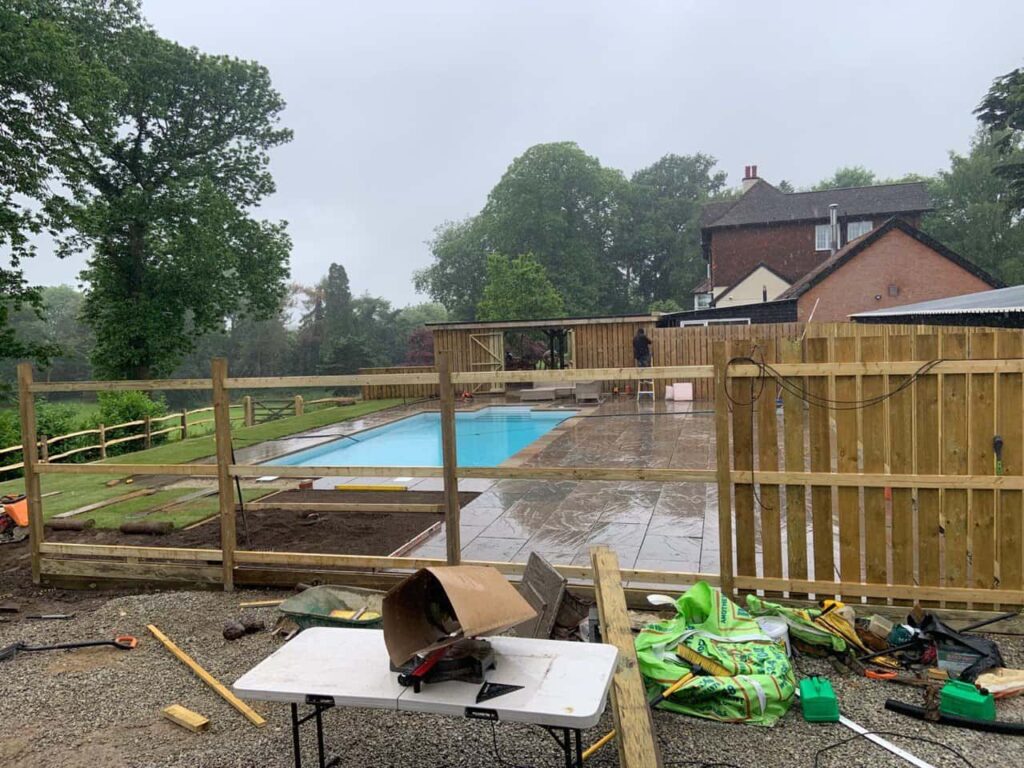The Most Common Causes of Fence Damage and How to Prevent Them
Introduction
A well-built fence provides security, privacy, and aesthetic appeal, but like any outdoor structure, it is constantly exposed to environmental factors that can cause damage over time. From harsh weather conditions to general wear and tear, there are several reasons why fences deteriorate. Understanding these causes and taking preventive measures can extend the lifespan of your fence, saving you time and money on repairs.
At Fast Fix Fencing Mildenhall, we specialise in the installation, maintenance, and repair of high-quality fences in Mildenhall, Suffolk. This guide explores the most common causes of fence damage and provides practical solutions to keep your fencing in excellent condition for years to come.
Key Takeaways
- Weather exposure is one of the leading causes of fence damage, particularly from wind, rain, and frost.
- Rot and insect infestations weaken wooden fences over time.
- Impact damage from vehicles, falling branches, or livestock can compromise fence stability.
- Poor installation and low-quality materials lead to early deterioration.
- Regular maintenance and preventative treatments help extend the lifespan of your fence.
Common Causes of Fence Damage
1. Harsh Weather Conditions
The UK’s unpredictable weather can take a toll on fences, particularly those made of timber.
How Weather Damages Fences
- Strong Winds – High winds can cause panels to loosen, bend, or break.
- Heavy Rain – Prolonged exposure to moisture can lead to rotting in wooden fences.
- Frost and Ice – Water can seep into cracks and freeze, causing expansion and structural damage.
- UV Exposure – Sunlight can dry out timber, leading to cracks and fading.
Prevention Tips
- Ensure fence posts are deeply secured in the ground with concrete for stability.
- Apply a weatherproof sealant or wood preservative annually.
- Choose high-quality, pressure-treated timber for added durability.
2. Rot and Insect Damage
Wooden fences are particularly susceptible to rot and pest infestations, which weaken the structure over time.
Signs of Rot and Insect Damage
- Soft, crumbling wood at the base of posts or panels.
- Discolouration and fungal growth.
- Small holes in the wood, indicating insect activity.
Prevention Tips
- Use rot-resistant or pressure-treated timber.
- Keep fence bases clear of damp soil by raising panels slightly above ground level.
- Inspect the fence regularly for signs of decay and apply a wood preservative.
3. Impact Damage
Fences can suffer physical damage from various sources, including:
- Falling tree branches during storms.
- Accidental vehicle collisions when installed near driveways.
- Livestock or pets pushing against or chewing on the fence.
Prevention Tips
- Trim overhanging branches to reduce the risk of impact damage.
- Install sturdy fencing with reinforced posts in high-traffic areas.
- Use livestock-friendly fencing solutions that withstand pressure.
4. Poor Installation and Substandard Materials
A poorly installed fence may not last as long as it should, leading to early repairs or complete replacement.
Common Installation Issues
- Shallow post holes – Posts should be buried at least 60cm deep for stability.
- Low-quality materials – Untreated timber is prone to early rotting.
- Weak connections – Poorly secured panels can loosen quickly in bad weather.
Prevention Tips
- Hire professional fencing contractors to ensure proper installation.
- Invest in high-quality fencing materials suited to your environment.
- Regularly check and reinforce joints, panels, and posts as needed.
5. Soil Movement and Drainage Issues
Changes in soil conditions can affect fence stability, particularly if drainage is poor.
How Soil Affects Fencing
- Waterlogged soil weakens wooden posts, causing them to rot or lean.
- Erosion can expose fence posts, reducing their stability.
- Ground movement from seasonal changes can cause shifts in the fence line.
Prevention Tips
- Install proper drainage to prevent water buildup around the fence.
- Use concrete footings for posts to stabilise them in shifting soil.
- Choose metal or composite fencing in areas prone to soil movement.
Maintaining Your Fence to Prevent Damage
Regular maintenance is key to preventing common fence issues and ensuring longevity.
Essential Maintenance Tips
- Inspect the fence twice a year for signs of damage.
- Apply wood treatment or protective coatings annually.
- Tighten loose screws, nails, and fastenings to maintain stability.
- Keep vegetation trimmed to reduce moisture build-up and prevent rot.
At Fast Fix Fencing Mildenhall, we offer professional fence maintenance services in Mildenhall, Suffolk, helping homeowners and businesses keep their fencing in top condition.
Conclusion
Fence damage can occur due to weather exposure, poor materials, impact damage, and lack of maintenance. However, by choosing high-quality materials, ensuring proper installation, and following a regular maintenance routine, you can significantly extend the lifespan of your fence.
At Fast Fix Fencing Mildenhall, we provide expert fence installation, repair, and maintenance services across Mildenhall, Suffolk. If you need help protecting or repairing your fence, contact us today for professional advice and a free consultation.
Call us on: 01638 591 199
Click here to find out more about Fast Fix Fencing Mildenhall
Click here to complete our contact form and see how we can help with your fencing needs.

